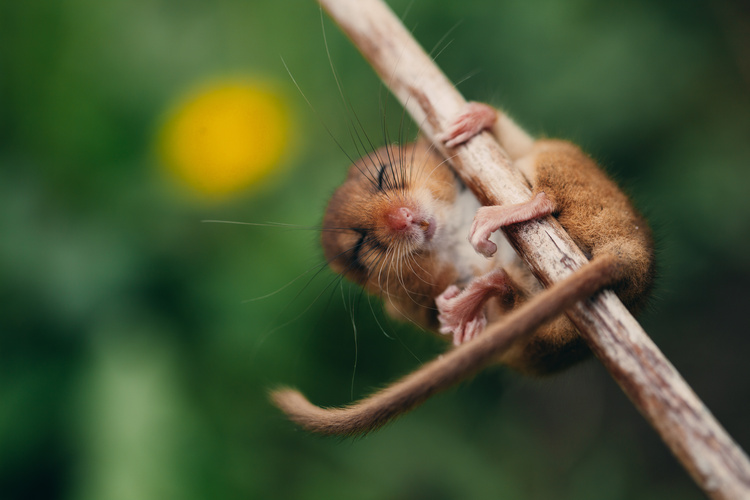
The UK’s cutest – and sleepiest – rodent is in serious danger, but a reintroduction programme is seeing dormice returning to the UK
By
Most of us feel like we don’t get quite as much sleep as we’d like. And so, it’s hard not to be just a little bit jealous of dormice. These tiny bundles of fluff like to sleep and it’s something they’re very good at. They spend the long summer daylight hours snoring away (and yes, they do snore) in a cosy grass nest before emerging in the evening cool. And then, once winter starts to bite, they go into hibernation and spend six solid months in a deep sleep!
As well as being world-class sleepers, dormice are also very cute. They are soft, sandy in colour, and with big, dark eyes and a bushy tail, they look like a cross between a mouse and a squirrel. In the UK, there are three kinds of dormice: the hazel dormice, which is our only native species, and the edible dormice and garden dormice, both of which have been introduced into the UK.
The hazel, or common, dormouse, is in fact anything but common in the UK. Favouring old coppice woodlands, ancient hedgerows and scrubland, dormice are only found in southern England and Wales where they have a very low population density. Unfortunately, these rodents are in serious danger of extinction in the UK thanks to habitat loss and inappropriate land management, which has led to an estimated 70 per cent decline in the UK dormouse population since 2000 and their total disappearance from 20 English counties over the past century.
Fortunately, for almost a quarter of a century, a group of UK conservation groups that includes Forestry England, People’s Trust for Endangered Species (PTES), Wildwood Trust, Paignton Zoo and ZSL, have been engaged in a captive breeding and reintroduction programme that has already seen over a thousand hazel dormice reintroduced into 25 different woodlands across 13 counties in the UK.
The reintroductions continued this month, with ten dormice released back into a Bedfordshire woodland to bolster and increase genetic diversity in that county’s only dormouse population. The reintroduction builds on a previous release in 2001 in the same woodland. Over the past 23 years, the population of dormice here has thrived, with their range extending beyond the original release site.
Katherine Walsh, Senior Environmental Specialist, Mammals, at Natural England said of the reintroductions, ‘The hazel dormouse is one of Britain’s most iconic native species, which has sadly also become one of our most endangered. The success of Bedfordshire’s dormouse population shows that by working together, we can bring our native species back from the brink. This latest release will accelerate the recovery of this species by creating a genetically diverse population that in turn supports a wider web of biodiversity.’
In addition to the Bedfordshire release a second release has also occurred in the Arnside & Silverdale National Landscape (bordering Lancashire and Cumbria), where another ten dormice have been released into a woodland owned by Natural England.
Related articles:




